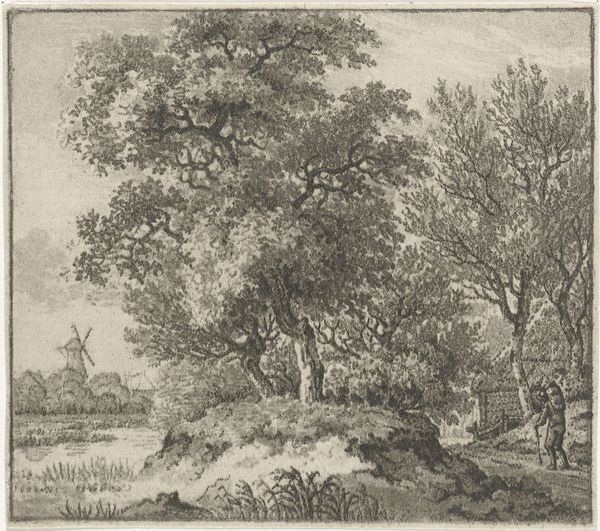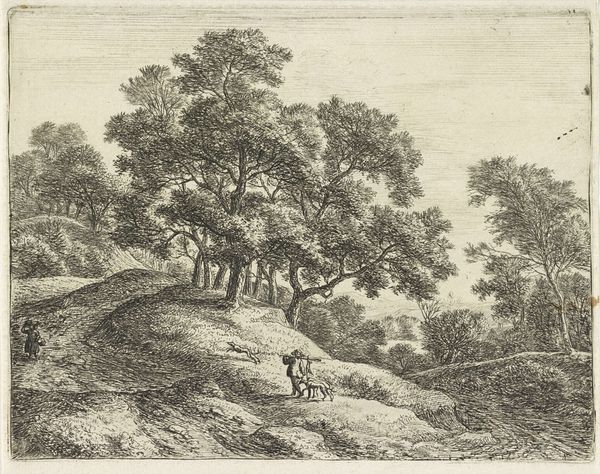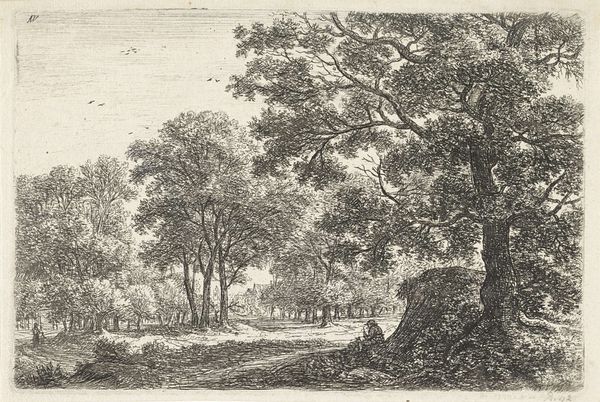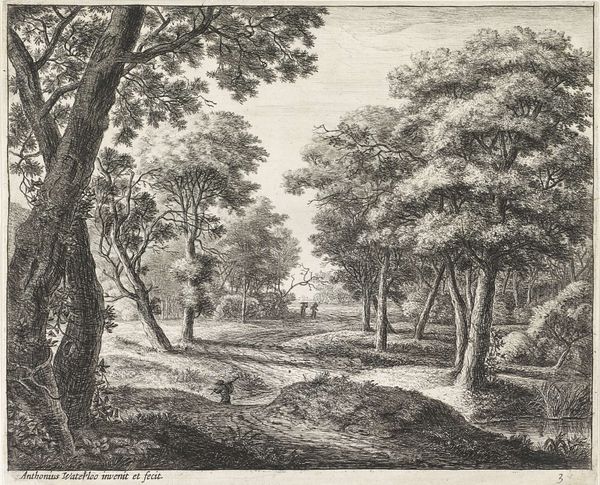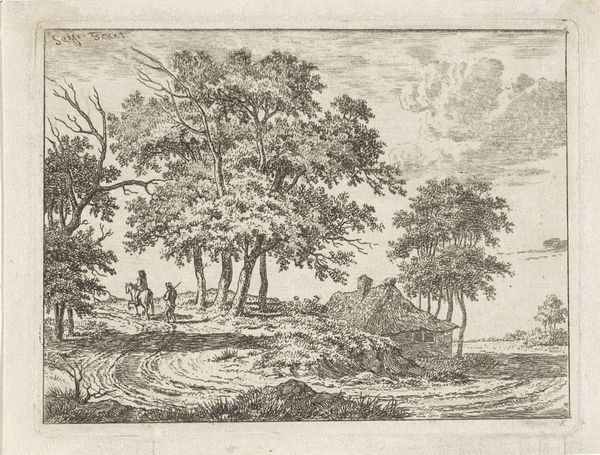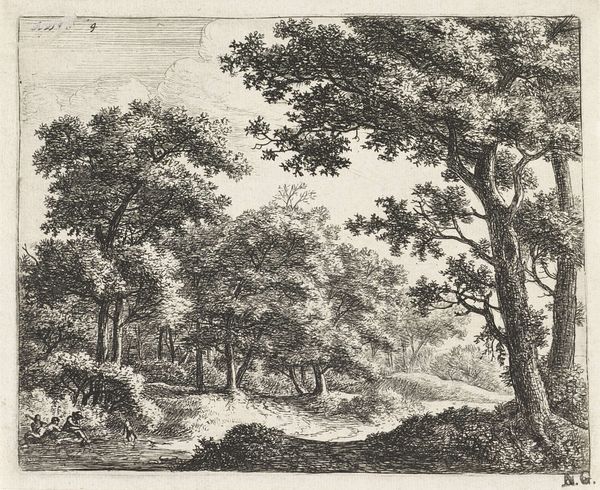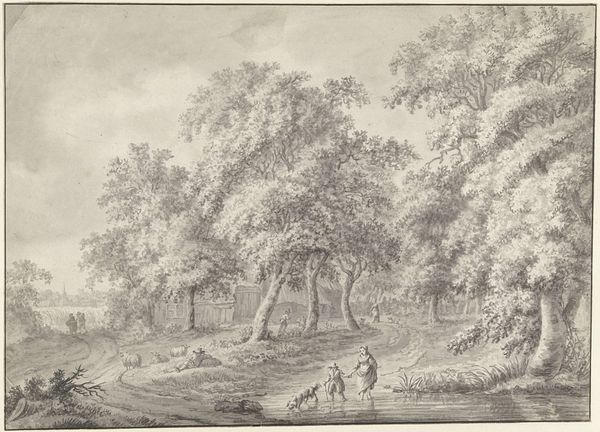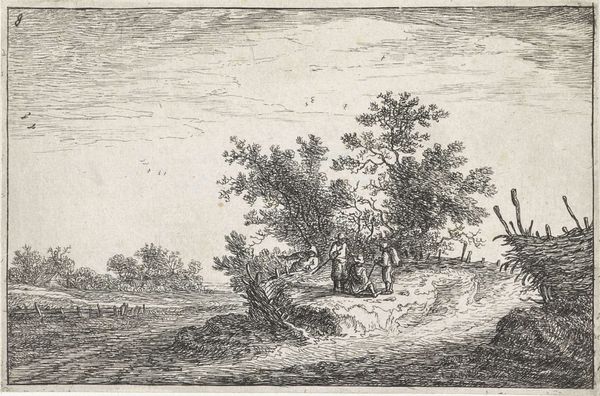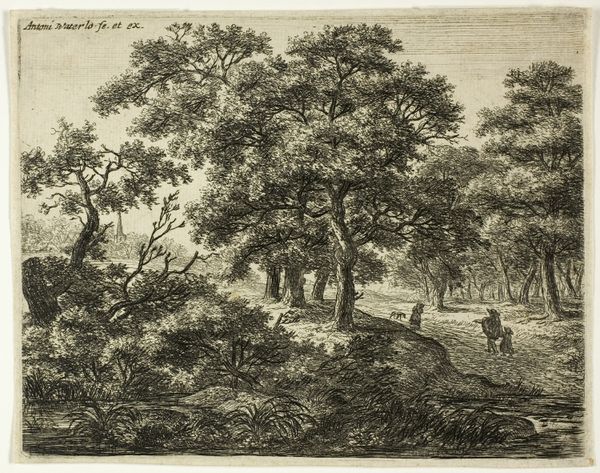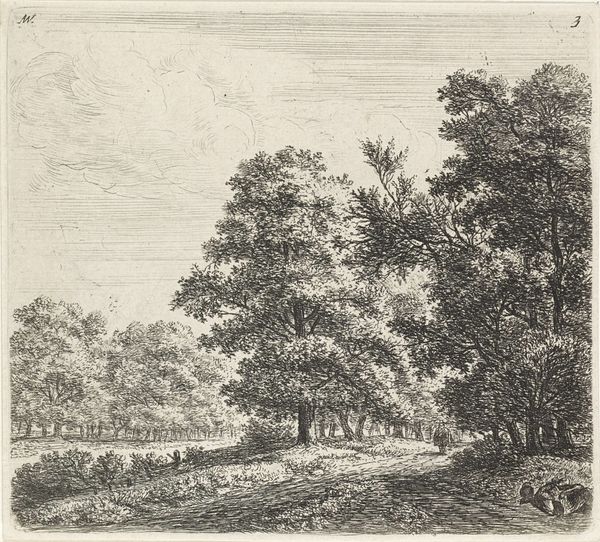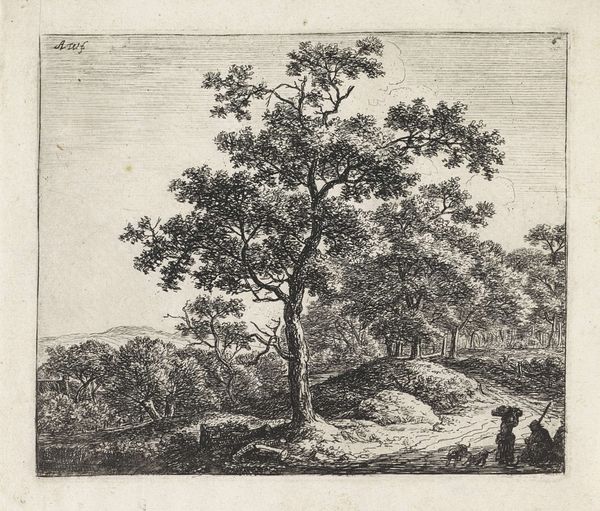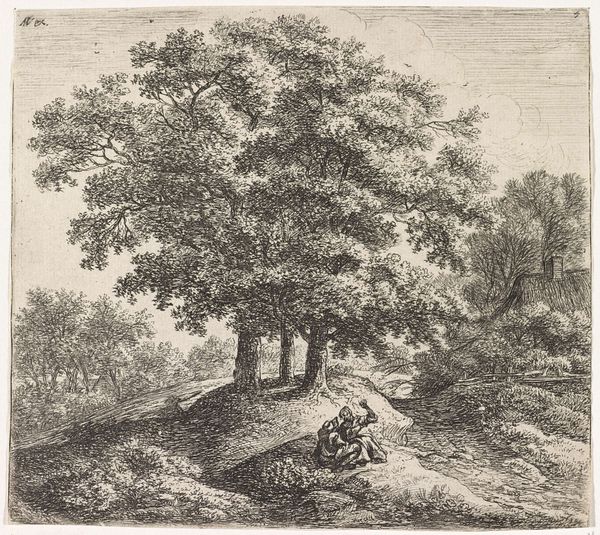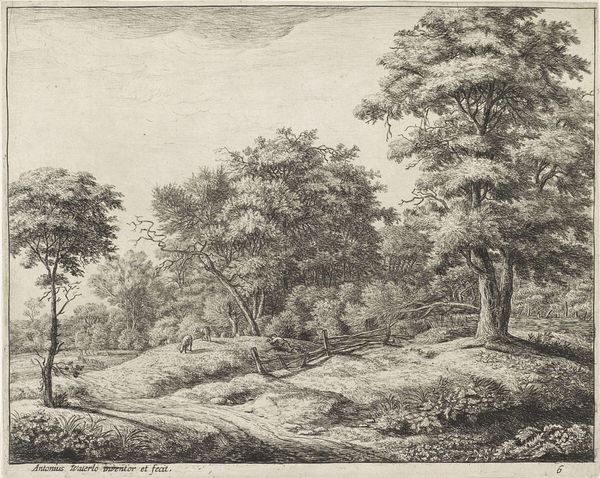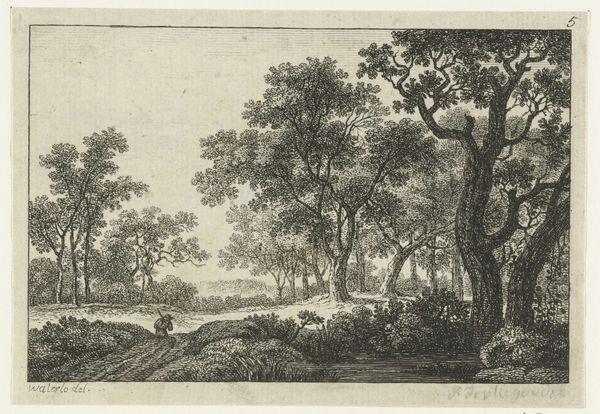
etching
#
dutch-golden-age
#
etching
#
old engraving style
#
landscape
#
forest
Dimensions: height 115 mm, width 140 mm
Copyright: Rijks Museum: Open Domain
Editor: We're looking at "Two Travelers in a Forest" by Anthonie Waterloo, likely from between 1630 and 1717. It's an etching, and I'm immediately struck by the density of the trees, it’s almost claustrophobic. What compositional elements stand out to you in this piece? Curator: The artist's skillful use of line is the most striking element. Notice how the varying densities of etched lines create a sophisticated tonal range. How do these tonal variations contribute to the overall impression? Editor: I guess the denser lines give a sense of depth and shadow. They almost sculpt the trees out of the white of the paper. So it’s the contrast of light and dark that's creating form here. Curator: Precisely. Consider the way Waterloo utilizes the untouched paper to create highlights. It isn’t merely an absence of ink, but a deliberate structural component. Does this conscious arrangement impact the overall effect? Editor: It does! It gives it a certain luminosity, which is unexpected given the limited palette. I'm wondering, what does the limited palette—the blacks and whites—say in comparison to vibrant hues? Curator: In foregoing the distractions of colour, the work invites an intimate contemplation of form, line, and texture. Consider the sinuous lines of the tree branches – how would their visual impact shift if they were depicted with bolder, unbroken lines? Editor: That’s a good point. It’s like the etching allows for a level of detail that wouldn’t necessarily be possible otherwise, right? And, now I'm thinking the monochrome palette contributes to the feeling of stepping back in time! Curator: Indeed. The success of the composition rests precisely upon the manipulation of these intrinsic qualities, and prompts considerations on semiotics, and visual languages, rather than a simple narrative rendering of "travelers" or "forest." Editor: I’m understanding the piece so much better now. Focusing on those key components brings out a dimension I wouldn’t have otherwise considered! Curator: And it provides us the means for appreciating Waterloo's technical mastery of the etching medium.
Comments
No comments
Be the first to comment and join the conversation on the ultimate creative platform.
